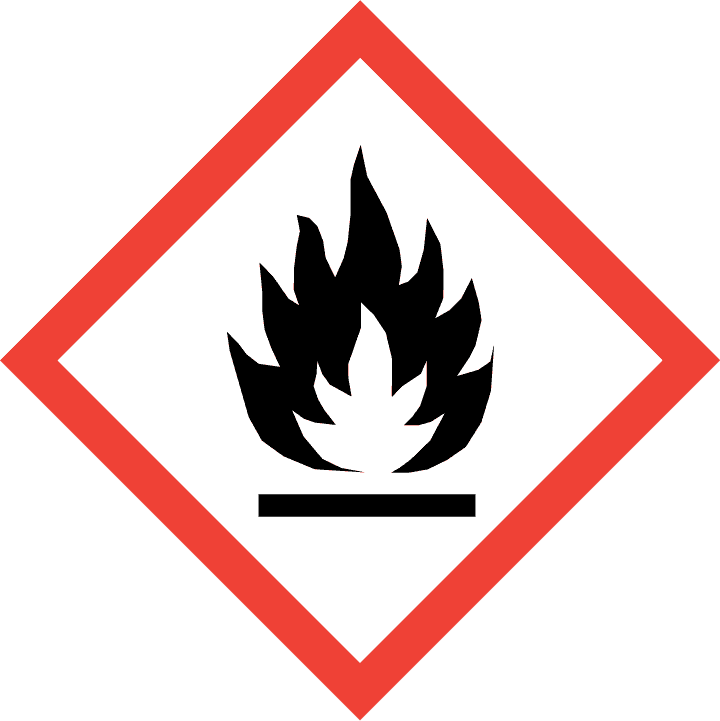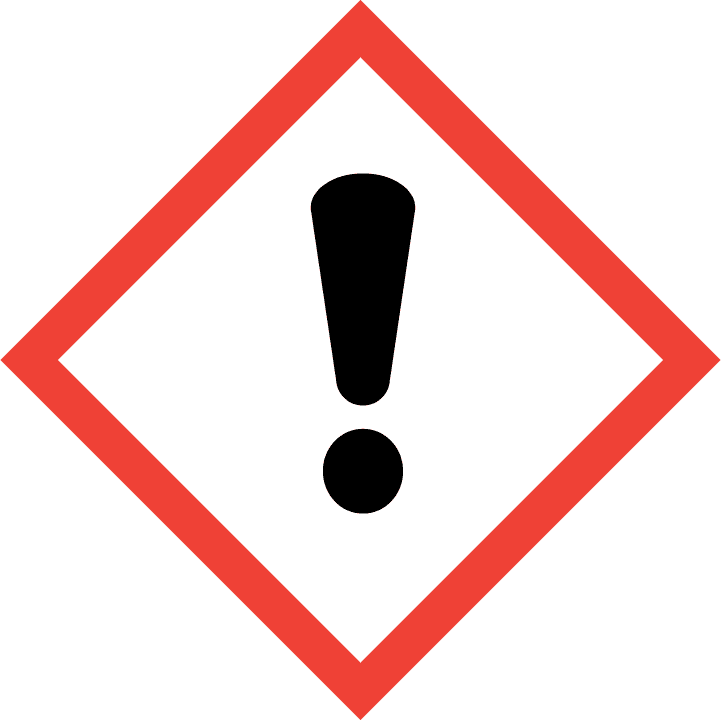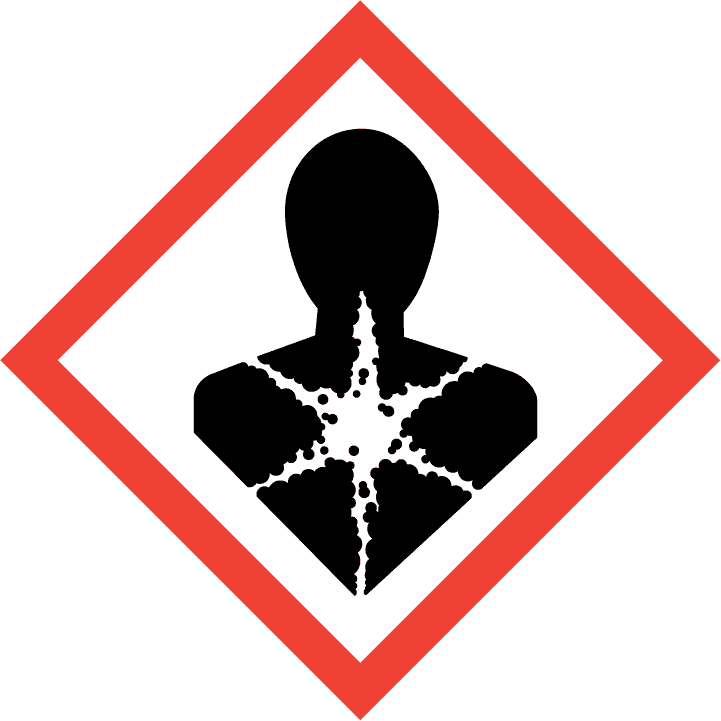|
SAFETY DATA SHEET according to Regulation 1907/2006 amended by 2020/878/EU
Product name: Cure It Concrete Primer
Creation date: 16.7.2019 ·
Revision: 2.11.2021 ·
Version: 1
|
 |
1. Identification of the substance/mixture and of the company/undertaking

chemius.net/MtSbe
1.1. Product identifier
Product name
Cure It Concrete Primer
Product code
UFI: VM10-G0S9-X00H-YPHF
1.2. Relevant identified uses of the substance or mixture and uses advised against
Relevant identified uses
Primer.
Uses advised against
Do not use for purposes other than those prescribed.
1.3. Details of the supplier of the safety data sheet
Supplier
G&B Northwest Ltd
Address: Giants Hall Farm, WN6 8RY Wigan, United Kingdom
Phone: +44 (0)1942 518150
E-mail: technical@cureit.uk.com
| |
1.4. Emergency telephone number
+44 (0) 3301 222666 Mon-Friday 8.30am – 4.30pm
2. Hazards identification
2.1 Classification of the substance or mixture
Classification according to Regulation (EC) No 1272/2008 (CLP)
Flam. Liq. 3; H226 Flammable liquid and vapour.
Skin Irrit. 2; H315 Causes skin irritation.
Skin Sens. 1; H317 May cause an allergic skin reaction.
Eye Irrit. 2; H319 Causes serious eye irritation.
Acute Tox. 4; H332 Harmful if inhaled.
Resp. Sens. 1; H334 May cause allergy or asthma symptoms or breathing difficulties if inhaled.
STOT SE 3; H335 May cause respiratory irritation.
Carc. 2; H351 Suspected of causing cancer.
STOT RE 2; H373 May cause damage to organs through prolonged or repeated exposure.
2.2 Label elements
2.2.1. Labelling according to Regulation (EC) No 1272/2008 [CLP]
Signal word: Danger
H226 Flammable liquid and vapour.
H315 Causes skin irritation.
H317 May cause an allergic skin reaction.
H319 Causes serious eye irritation.
H332 Harmful if inhaled.
H334 May cause allergy or asthma symptoms or breathing difficulties if inhaled.
H335 May cause respiratory irritation.
H351 Suspected of causing cancer.
H373 May cause damage to organs through prolonged or repeated exposure.
P201 Obtain special instructions before use.
P202 Do not handle until all safety precautions have been read and understood.
P210 Keep away from heat, hot surfaces, sparks, open flames and other ignition sources. No smoking.
P240 Ground and bond container and receiving equipment.
P241 Use explosion-proof electrical equipment.
P242 Use non-sparking tools.
P243 Take action to prevent static discharges.
P260 Do not breathe vapours/spray.
P261 Avoid breathing vapours/spray.
P264 Wash contaminated skin thoroughly after handling.
P271 Use only outdoors or in a well-ventilated area.
P272 Contaminated work clothing should not be allowed out of the workplace.
P280 Wear protective gloves/protective clothing/eye protection/face protection.
P284 [In case of inadequate ventilation] wear respiratory protection.
P302 + P352 IF ON SKIN: Wash with plenty of water.
P303 + P361 + P353 IF ON SKIN (or hair): Take off immediately all contaminated clothing. Rinse skin with water [or shower].
P304 + P340 IF INHALED: Remove person to fresh air and keep comfortable for breathing.
P305 + P351 + P338 IF IN EYES: Rinse cautiously with water for several minutes. Remove contact lenses, if present and easy to do. Continue rinsing.
P308 + P313 IF exposed or concerned: Get medical advice/attention.
P312 Call a POISON CENTER/doctor if you feel unwell.
P314 Get medical advice/attention if you feel unwell.
P321 Specific treatment (see instructions on this label).
P332 + P313 If skin irritation occurs: Get medical advice/attention.
P333 + P313 If skin irritation or rash occurs: Get medical advice/attention.
P337 + P313 If eye irritation persists: Get medical advice/attention.
P342 + P311 If experiencing respiratory symptoms: Call a POISON CENTER or doctor/physician.
P362 + P364 Take off contaminated clothing and wash it before reuse.
P370 + P378 In case of fire: Use carbon dioxide, water spray, foam or dry chemical powder for extinction.
P403 + P233 Store in a well-ventilated place. Keep container tightly closed.
P403 + P235 Store in a well-ventilated place. Keep cool.
P405 Store locked up.
P501 Dispose of contents/container in accordance with national regulation.
2.2.2. Contains:
xylene
'4,4'-methylenediphenyl diisocyanate
2.2.3. Special provisions
Special hazards are not known or expected.
2.3. Other hazards
The substances in the mixture are not classified as persistent, bioaccumulative and toxic (PBT) or very persistent and very bioaccumulative (vPvB).
3. Composition/information on ingredients
3.1. Substances
For mixtures see 3.2.
3.2. Mixtures
| Name |
CAS
EC
Index |
% |
Classification according to Regulation (EC)
No 1272/2008 (CLP) |
Specific Conc. Limits |
Classification according to directive 67/548/EEC or 99/45/EC |
REACH Registration No. |
| xylene [C] |
1330-20-7
215-535-7
601-022-00-9 |
30-60 |
Flam. Liq. 3; H226
Acute Tox. 4; H312
Skin Irrit. 2; H315
Acute Tox. 4; H332 |
|
Xn; R20/21
Xi; R38
R10 |
- |
| '4,4'-methylenediphenyl diisocyanate [C] |
101-68-8
202-966-0
615-005-00-9 |
10-30 |
Skin Irrit. 2; H315
Skin Sens. 1; H317
Eye Irrit. 2; H319
Acute Tox. 4; H332
Resp. Sens. 1; H334
STOT SE 3; H335
Carc. 2; H351
STOT RE 2; H373 |
Skin Irrit. 2; H315: C ≥ 5 %
Eye Irrit. 2; H319: C ≥ 5 %
Resp. Sens. 1; H334: C ≥ 0,1 %
STOT SE 3; H335: C ≥ 5 % |
Carc. Cat. 3; R40
Xn; R20-42/43-48/20
Xi; R36/37/38 |
- |
Notes for substances:
| C |
Some organic substances may be marketed either in a specific isomeric form or as a mixture of several isomers.
In this case the supplier must state on the label whether the substance is a specific isomer or a mixture of isomers. |
4. First aid measures
4.1. Description of first aid measures
General notes
Never give anything by mouth to an unconscious person. Place patient in recovery position and ensure airway patency. When in doubt or if feeling unwell seek medical assistance. Show the safety data sheet and label to the physician.
First aid personnel should wear appropriate protective equipment during any rescue. If it is suspected that volatile contaminants are still present around the affected person, First aid personnel should wear an appropriate respirator or self-contained breathing apparatus. Wash contaminated clothing thoroughly with water before removing it from the affected person, or wear gloves. It may be dangerous for first aid personnel to carry out mouth-to-mouth resuscitation.
Following inhalation
Remove affected person from source of contamination. Move affected person to fresh air and keep warm and at rest in a position comfortable for breathing. Maintain an open airway. Loosen tight clothing such as collar, tie or belt. When breathing is difficult, properly trained personnel may assist affected person by administering oxygen. Place unconscious person on their side in the recovery position and ensure breathing can take place. In the event of any sensitisation symptoms developing, ensure further exposure is avoided.
Following skin contact
It is important to remove the substance from the skin immediately. In the event of any sensitisation symptoms developing, ensure further exposure is avoided. Remove contamination with soap and water or recognised skin cleansing agent. Get medical attention if symptoms are severe or persist after washing.
Following eye contact
Rinse immediately with plenty of water. Remove any contact lenses and open eyelids wide apart. Continue to rinse for at least 10 minutes.
Following ingestion
Rinse mouth thoroughly with water. Remove any dentures. Give a few small glasses of water or milk to drink. Stop if the affected person feels sick as vomiting may be dangerous. Do not induce vomiting unless under the direction of medical personnel. If vomiting occurs, the head should be kept low so that vomit does not enter the lungs. Never give anything by mouth to an unconscious person. Move affected person to fresh air and keep warm and at rest in a position comfortable for breathing. Place unconscious person on their side in the recovery position and ensure breathing can take place. Maintain an open airway. Loosen tight clothing such as collar, tie or belt.
4.2. Most important symptoms and effects, both acute and delayed
Inhalation
Harmful.
Can cause irritation of respiratory system.
May cause allergy or asthma symptoms or breathing difficulties if inhaled
A single exposure may cause the following adverse effects: Headache. Exhaustion and weakness.
Prolonged or repeated exposure may cause the following adverse effects: Suspected of causing cancer.
Skin contact
Itching, redness, pain.
May cause sensitisation by skin contact (symptoms: itching, redness, rashes).
Prolonged or repeated exposure may cause the following adverse effects: Suspected of causing cancer.
Eye contact
Causes severe eye irritation.
Redness, tearing, pain.
Ingestion
May cause nausea/vomiting and diarrhea.
May cause abdominal discomfort.
Prolonged or repeated exposure may cause the following adverse effects: Suspected of causing cancer.
4.3. Indication of any immediate medical attention and special treatment needed
Treat symptomatically. May cause sensitisation or allergic reactions in sensitive individuals.
5. Firefighting measures
5.1. Extinguishing media
Suitable extinguishing media
Carbon dioxide. Dry chemical powder. Water spray. Alcohol resistant foam. Use extinguishing measures that are appropriate to local circumstances and the surrounding environment.
Unsuitable extinguishing media
Full water jet. Do not use water jet as an extinguisher, as this will spread the fire.
5.2. Special hazards arising from the substance or mixture
Hazardous combustion products
In case of a fire toxic gases can be generated; do not inhale gases/smoke. Possible bursting of container due to pressure rise.
5.3. Advice for firefighters
Protective actions
Prolonged heating can cause an explosion. In case of fire or heating do not breathe fumes/vapours. Cool containers at risk with water spray. If possible remove containers from endangered area. No action shall be taken involving any personal risk or without suitable training. In case of fire evacuate the area. Keep upwind to avoid inhalation of firefighting gases, vapours, fumes and smoke. Ventilate closed spaces before entering them. Prevent accumulation of vapours with water spray. Use water to cool exposed surfaces and to protect the firefighters.
Special protective equipment for firefighters
Firefighters should wear appropriate protective clothing for firefighters (including helmets, protective boots and gloves) (EN 469) and self-contained breathing apparatus (SCBA) with a full face-piece (EN 137).
Additional information
Contaminated firefighting water must be disposed of in accordance with the regulations; do not allow to reach the sewage system.
6. ACCIDENTAL RELEASE MEASURES
6.1. Personal precautions, protective equipment and emergency procedures
6.1.1. For non-emergency personnel
Protective equipment
Use personal protective equipment (Section 8). Avoid contact with the eyes and skin. Do not breathe vapours/mist. Refer to protective measures listed in Sections 8.
Emergency procedures
Ensure adequate ventilation. Keep away from sources of ignition and/or heat; No smoking! Prevent access to unprotected personnel. No action shall be taken involving any personal risk or without suitable training. Evacuate the danger zone. Do not breathe vapour or mist. Avoid contact with skin, eyes and clothing. Do not touch or walk through spilled material. In case of insufficient ventilation, wear suitable respiratory protection equipment.
6.1.2. For emergency responders
During intervention, use personal protective equipment (Section 8).
6.2. Environmental precautions
Do not allow product to reach water/drains/sewage systems or permeable soil. If accidental large entry into water or ground occurs, inform responsible authorities.
6.3. Methods and material for containment and cleaning up
6.3.1. For containment
Stem the spill if this does not pose risks.
6.3.2. For cleaning up
Ventilate the premises. Approach the spill from upwind. Small amounts <1L: dilute with water, then clean with a sponge or collect using absorbent, inert material, and collect in an appropriate container. Large spill: Evacuate exposed perosennel from the danger area. Wash spillages into an effluent treatment plant or proceed as follows: Absorb product (with inert material), collect it in special container and dispose it to a licensed hazardous-waste disposal contractor. Fill into marked and tightly sealed containers. Clean contaminated objects and areas thoroughly observing environmental regulations. Contaminated absorbent material may pose the same hazard as the spilt product. Use spark-proof tools. Use only explosion-proof instruments and equipment. Prevent release into the sewer, water, basements or confined areas.
6.3.3. Other information
See Section 11 for additional information on health hazards. Dispose of in accordance with the instructions from Section 13.
6.4. Reference to other sections
See also Sections 8 and 13.
7. Handling and storage
7.1. Precautions for safe handling
7.1.1. Protective measures
Measures to prevent fire
Ensure adequate ventilation. Take precautionary measures against static discharges. Keep away from sources of ignition - no smoking. Use spark-proof tools. Do not reuse the empty container.
Measures to prevent aerosol and dust generation
Use general or local exhaust ventilation to prevent inhaling vapours and aerosols. Avoid formation of aerosols.
Measures to protect the environment
Do not discharge into drains, surface water and soil. After use immediately close container tightly.
7.1.2. Advice on general occupational hygiene
Do not eat, drink or smoke while working. Do not breathe vapours/mist. Use good personal hygiene practices – wash hands at breaks and when done working with material. Avoid contact with skin, eyes and clothes. Remove contaminated clothes and wash them before reuse. Wear suitable protective equipment; see Section 8. Avoid exposure - obtain special instructions before using. Do not handle broken packages without protective equipment. Read and understand all safety instructions before use. At the end of working time, take a shower and change clothes.
7.2. Conditions for safe storage, including any incompatibilities
7.2.1. Technical measures and storage conditions
Protect from open fire, heat and direct sunlight. Keep away from food, drink and animal feeding stuffs. Keep away from sources of ignition - no smoking. Keep in a cool, dry and well ventilated place. Store in accordance with local regulations. To prevent damage of packaging. Bund storage facilities to prevent soil and water pollution in the event of spillage. The storage area floor should be leak-tight, jointless and not absorbent.
7.2.2. Packaging materials
Store only in original container.
7.2.3. Requirements for storage rooms and vessels
Close opened containers after use. Put the containers upright to prevent from leaking. Do not store in unlabelled containers.
7.2.5. Further information on storage conditions
-
7.3. Specific end use(s)
Recommendations
See identified uses in Section 1.2.
Industrial sector specific solutions
-
8. Exposure controls/personal protection
8.1. Control parameters
8.1.1. Occupational exposure limit values
8.1.2. Information on monitoring procedures
BS EN 14042:2003 Title Identifier: Workplace atmospheres. Guide for the application and use of procedures for the assessment of exposure to chemical and biological agents. BS EN 482:2021 Workplace exposure. Procedures for the determination of the concentration of chemical agents. Basic performance requirements.
8.1.3. DNEL/DMEL values
No information.
8.1.4. PNEC values
No information.
8.2. Exposure controls
8.2.1. Appropriate engineering control
Substance/mixture related measures to prevent exposure during identified uses
Do not breathe vapours/aerosols. Use good personal hygiene practices – wash hands at breaks and when done working with material. Handle in accordance with good industrial hygiene and safety practice. Do not eat, drink or smoke while working. Avoid contact with skin, eyes and clothes.
Organisational measures to prevent exposure
Remove all contaminated clothes immediately and wash them before reuse. Keep eyewash bottles or personal eyewash units and emergency showers available. Contaminated work clothing should not be allowed out of the workplace. Clean equipment and the work area every day.
Technical measures to prevent exposure
Provide good ventilation and local exhaust in areas with increased concentration. Personal, workplace environment or biological monitoring may be required to determine the effectiveness of the ventilation or other control measures and/or the necessity to use respiratory protective equipment. Use process enclosures, local exhaust ventilation or other engineering controls as the primary means to minimise worker exposure. The use of adequate technical equipment must always take priority over personal protective equipment. Ensure control measures are regularly inspected and maintained. Ensure operatives are trained to minimise exposure. Keep away from food, drink and animal feeding stuffs.
8.2.2. Personal protective equipment
Eye and face protection
Safety eyewear complying with an approved standard should be used when a risk assessment indicates this is necessary to avoid exposure to liquid splashes, mists or dusts. Tight fitting protective goggles (EN 166). If there is danger of splash or spray use the face shield.
Hand protection
If a risk assessment indicates it is necessary, protection gloves should be worn. Protective gloves (EN 374). The penetration time is determined by the protective glove manufacturer and must be observed. Observe the manufacturer's instructions regarding the use, storage, maintenance and replacement of gloves. In case of damage or at the first signs of wear and tear, change the gloves immediately. The selection of the suitable gloves does not only depend on the material, but also on further marks of quality and varies from manufacturer to manufacturer. Follow the manufacturer’s instructions about permeability and penetration times and specific workplace conditions (mechanic load, exposure duration). Frequent change is advisable.
Skin protection
Appropriate footwear and additional protective clothing complying with an approved standardshould be worn if a risk assessment indicates skin contamination is possible. At high risk of skin exposure chemical suits (EN ISO 6530:2005) and boots may be required (EN ISO 20345:2012).
Respiratory protection
Use a respirator with an approved filter if a risk assessment indicates this is necessary. If limit values are exceeded use standardized respirators. Check that mask fits tightly and change filter regularly. Wear suitable protective breathing mask (EN 136) with filter A2-P2 (EN 14387).
8.2.3. Environmental exposure controls
Substance/mixture related measures to prevent exposure
Implement measures to protect the environment. Avoid release to the environment. The emissions generated by manufacturing processes, including those generated by ventilation equipment, should be checked to ensure compliance with environmental standards. In order to maintain emissions at acceptable rates if necessary to equip the manufacturing material with air purifier or filter, or by technical change.
Organisational measures to prevent exposure
Keep container tightly sealed when not in use.
Technical measures to prevent exposure
Do not allow product to reach drains, sewage systems or ground water.
9. PHYSICAL AND CHEMICAL PROPERTIES
9.1. Information on basic physical and chemical properties
| - |
Physical state: |
liquid |
| - |
Colour: |
|
| - |
Odour: |
|
Important health, safety and environmental information
| - |
pH |
No information. |
| - |
Melting point/freezing point |
No information. |
| - |
Initial boiling point/boiling range |
No information. |
| - |
Flash point |
No information. |
| - |
Evaporation rate |
No information. |
| - |
Flammability (solid, gas) |
No information. |
| - |
Explosion limits (vol%) |
No information. |
| - |
Vapour pressure |
No information. |
| - |
Vapour density |
No information. |
| - |
Density |
No information. |
| - |
Solubility |
No information. |
| - |
Partition coefficient |
No information. |
| - |
Auto-ignition temperature |
No information. |
| - |
Decomposition temperature |
No information. |
| - |
Viscosity |
No information. |
| - |
Explosive properties |
No information. |
| - |
Oxidising properties |
No information. |
| - |
Particle characteristics |
No information. |
10. STABILITY AND REACTIVITY
10.1. Reactivity
Flammable liquid and vapours. Stable under recommended transport or storage conditions.
10.2. Chemical stability
Product is stable under normal conditions of use, recommended handling and storage conditions.
10.3. Possibility of hazardous reactions
Vapours and air can form flammable or explosive mixtures.
10.4. Conditions to avoid
Protect from heat, direct sunlight, open fire, sparks. Take precautionary measures against static discharges.
10.5. Incompatible materials
-
10.6. Hazardous decomposition products
Under normal use conditions no hazardous decomposition products are expected. In case of fire/explosion vapours/gases that pose a health hazard are released.
11. Toxicological information
11.1. Information on hazard classes as defined in Regulation (EC) No 1272/2008
(a) Acute toxicity
| Name | Exposure route | Type | Species | Time | Value | Method | Remark |
|---|
| For product | dermal | ATE | | | 2750 mg/kg | | |
| For product | Inhalation (gases) | ATE | | | 20379,68 ppm | | |
| For product | inhalation (vapours) | ATE | | | 49,66 mg/l | | |
| For product | inhalation (dusts/mists) | ATE | | | 4,24 mg/l | | |
| Additional information: Harmful if inhaled. A single exposure may cause the following adverse effects: Headache. Exhaustion and weakness. |
(b) Skin corrosion/irritation
| Additional information: Causes skin irritation. |
(c) Serious eye damage/irritation
| Additional information: Causes serious eye irritation. |
(d) Respiratory or skin sensitisation
| Additional information: May cause an allergic skin reaction. May cause allergy or asthma symptoms or breathing difficulties if inhaled. |
(e) (Germ cell) mutagenicity
| Name | Type | Species | Time | Result | Method | Remark |
|---|
| For product | in-vitro mutagenicity | | | Negative. | | |
(f) Carcinogenicity
| Name | Exposure route | Type | Species | Time | Value | Result | Method | Remark |
|---|
| For product | | | | | | Suspected of causing cancer. | | |
| For product | | | | | | IARC carcinogenicity: None of the ingredients are listed or exempt. | | |
(g) Reproductive toxicity
| Name | Reproductive toxicity type | Type | Species | Time | Value | Result | Method | Remark |
|---|
| For product | | - | | | | Not toxic for reproduction. | | |
Summary of evaluation of the CMR properties
May cause cancer after repeated exposure. Risk of cancer depends on duration and level of exposure. The severity of the symptoms described will vary dependent on the concentration and the length of exposure.
(h) STOT-single exposure
| Additional information: STOT - single exposure: May cause respiratory irritation. |
(i) STOT-repeated exposure
| Additional information: May cause damage to organs through prolonged or repeated exposure. |
(j) Aspiration hazard
| Additional information: Aspiration hazard: Not classified. |
11.2. Information on other hazards
11.2.1. Endocrine disrupting properties
No information.
11.2.2. Other information
No information.
12. Ecological information
12.1. Toxicity
12.1.1. Acute (short-term) toxicity
No information.
12.1.2. Chronic (long-term) toxicity
No information.
12.2. Persistence and degradability
12.2.1. Abiotic degradation, physical- and photo-chemical elimination
No information.
12.2.2. Biodegradation
No information.
Additional information
No data on biodegradability.
12.3. Bioaccumulative potential
12.3.1. Partition coefficient
No information.
12.3.2. Bioconcentration factor (BCF)
No information.
Additional information
No data available for mixture.
12.4. Mobility in soil
12.4.1. Known or predicted distribution to environmental compartments
No information.
12.4.2. Surface tension
No information.
12.4.3. Adsorption/Desorption
No information.
Additional information
No data available for mixture.
12.5. Results of PBT and vPvB assessment
Does not contain component(s) that meet(s) the criteria of PBT and/or vPvB as listed in Annex XIII of Regulation (EC) No 1907/2006.
12.6. Endocrine disrupting properties
No information.
12.7. Additional information
For product
Product is not classified as dangerous for environment.
Do not allow undiluted product or large quantities of it to reach ground water, water bodies or sewage system.
13. Disposal considerations
13.1. Waste treatment methods
13.1.1. Product / Packaging disposal
Waste chemical
The generation of waste should be avoided or minimised wherever possible. Reuse or recycle, if possible. Do not allow product to reach drains/sewage systems. Disposal must be made according to official regulations: deliver it to authorised collector/remover/transformer of hazardous waste. Collect in appropriate containers, label and dispose of in accordance with local regulations. Dispose of in accordance with applicable waste disposal regulation.
Packaging
Uncleaned containers are classified as hazardous waste - they should be handled in the same manner as the contents. Deliver completely emptied containers to approved waste disposal authorities. Uncleaned containers should not be perforated, cut or welded. Empty containers represent a fire hazard as they may contain flammable product residues and vapour. Dispose of in accordance with applicable waste disposal regulation.
13.1.2. Waste treatment-relevant information
-
13.1.3. Sewage disposal-relevant information
-
13.1.4. Other disposal recommendations
-
14. Transport information
14.1. UN number or ID number
UN 1307
14.2. UN proper shipping name
XYLENES, SOLUTION
14.3. Transport hazard class(es)
3
14.5. Environmental hazards
NO.
14.6. Special precautions for user
Limited quantities
5 L
Tunnel restriction code
(D/E)
14.7. Maritime transport in bulk according to IMO instruments
Goods may not be carried in bulk in bulk containers, containers or vehicles.
15. Regulatory information
15.1. Safety, health and environmental regulations/legislation specific for the substance or mixture
- Regulation (EC) No 1907/2006 concerning the Registration, Evaluation, Authorisation and Restriction of Chemicals (REACH)(including last amendment Commission Regulation (EU) 2020/878)
- Regulation (EC) No 1272/2008 on classification, labelling and packaging of substances and mixtures
15.1.1. Information according 2004/42/EC about limitation of emissions of volatile organic compounds (VOC-guideline)
Not applicable.
15.1.2. Special instructions
Observe the regulations on employment and protection against dangerous substances for young people, pregnant women and nursing mothers.
15.2. Chemical Safety Assessment
A Chemical Safety Assessment has not been carried out.
Abbreviations and acronyms
ATE - Acute Toxicity Estimate
ADR - Agreement concerning the International Carriage of Dangerous Goods by Road
ADN - European Agreement concerning the International Carriage of Dangerous Goods by Inland Waterways
CEN - European Committee for Standardisation
C&L - Classification and Labelling
CLP - Classification Labelling Packaging Regulation; Regulation (EC) No 1272/2008
CAS# - Chemical Abstracts Service number
CMR - Carcinogen, Mutagen, or Reproductive Toxicant
CSA - Chemical Safety Assessment
CSR - Chemical Safety Report
DMEL - Derived Minimal Effect Level
DNEL - Derived No Effect Level
DPD - Dangerous Preparations Directive 1999/45/EC
DSD - Dangerous Substances Directive 67/548/EEC
DU - Downstream User
EC - European Community
ECHA - European Chemicals Agency
EC-Number - EINECS and ELINCS Number (see also EINECS and ELINCS)
EEA - European Economic Area (EU + Iceland, Liechtenstein and Norway)
EEC - European Economic Community
EINECS - European Inventory of Existing Commercial Substances
ELINCS - European List of notified Chemical Substances
EN - European Standard
EQS - Environmental Quality Standard
EU - European Union
Euphrac - European Phrase Catalogue
EWC - European Waste Catalogue (replaced by LoW – see below)
GES - Generic Exposure Scenario
GHS - Globally Harmonized System
IATA - International Air Transport Association
ICAO-TI - Technical Instructions for the Safe Transport of Dangerous Goods by Air
IMDG - International Maritime Dangerous Goods
IMSBC - International Maritime Solid Bulk Cargoes
IT - Information Technology
IUCLID - International Uniform Chemical Information Database
IUPAC - International Union for Pure Applied Chemistry
JRC - Joint Research Centre
Kow - octanol-water partition coefficient
LC50 - Lethal Concentration to 50 % of a test population
LD50 - Lethal Dose to 50% of a test population (Median Lethal Dose)
LE - Legal Entity
LoW - List of Wastes (see http://ec.europa.eu/environment/waste/framework/list.htm)
LR - Lead Registrant
M/I - Manufacturer / Importer
MS - Member States
MSDS - Material Safety Data Sheet
OC - Operational Conditions
OECD - Organization for Economic Co-operation and Development
OEL - Occupational Exposure Limit
OJ - Official Journal
OR - Only Representative
OSHA - European Agency for Safety and Health at work
PBT - Persistent, Bioaccumulative and Toxic substance
PEC - Predicted Effect Concentration
PNEC(s) - Predicted No Effect Concentration(s)
PPE - Personal Protection Equipment
(Q)SAR - Qualitative Structure Activity Relationship
REACH - Registration, Evaluation, Authorisation and Restriction of Chemicals
Regulation (EC) No 1907/2006
RID - Regulations concerning the International Carriage of Dangerous Goods by Rail
RIP - REACH Implementation Project
RMM - Risk Management Measure
SCBA - Self-Contained Breathing Apparatus
SDS - Safety data sheet
SIEF - Substance Information Exchange Forum
SME - Small and Medium sized Enterprises
STOT - Specific Target Organ Toxicity
(STOT) RE - Repeated Exposure
(STOT) SE - Single Exposure
SVHC - Substances of Very High Concern
UN - United Nations
vPvB - Very Persistent and Very Bioaccumulative
Key literature references and sources for data
Safety Data Sheet, CURE IT CONCRETE PRIMER, G&B North West Ltd, COMPILATION DATE: 28TH NOVEMBER 2018, VERSION: 1.
List of relevant H phrases
H226 Flammable liquid and vapour.
H312 Harmful in contact with skin.
H315 Causes skin irritation.
H317 May cause an allergic skin reaction.
H319 Causes serious eye irritation.
H332 Harmful if inhaled.
H334 May cause allergy or asthma symptoms or breathing difficulties if inhaled.
H335 May cause respiratory irritation.
H351 Suspected of causing cancer .
H373 May cause damage to organs through prolonged or repeated exposure .

- Provided correct labelling of the product
- Compliance with the local legislation
- Provided correct classification of the product
- Provided adequate transport data
© BENS Consulting | www.bens-consulting.com
The information of this SDS is based on the present state of our knowledge and meets the requirements of EU and national
laws. The user’s working conditions however, are beyond our knowledge and control. The product is not to be used for purposes
other than those specified under Section 1 without a written permission. It remains the responsibility of the user to ensure that
the necessary steps are taken to meet the laws and regulations. Handling of the product may only be done by people above 18
years of age, who are satisfactorily informed of how to do the work, the hazardous properties and necessary safety precautions.
The information given in this SDS is to describe the product only in terms of health and safety requirements and should not,
therefore, be construed as guaranteeing specific properties.














